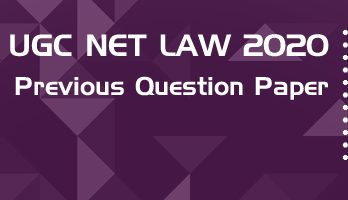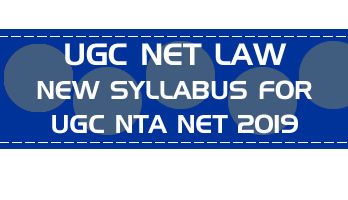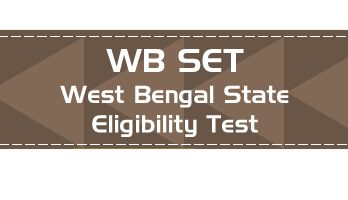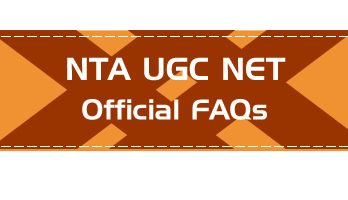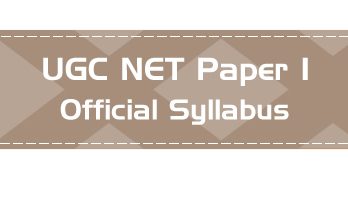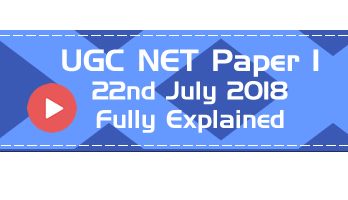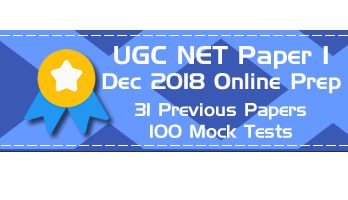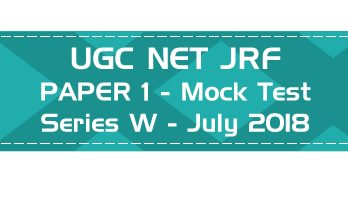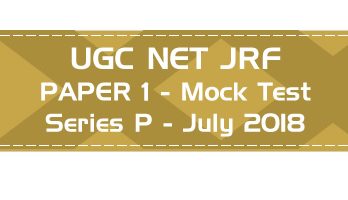- Latest Pattern Mock Tests including comprehension based questions
- Previous Question Papers with Answer Keys - From 2004 till the most recent exam
- 75 Full Length Mock Tests - New Pattern Paper II, with 100 questions each
- 50 Mini Practice Mock tests - with 25 questions each
- Unlimited Practice - New Questions in every attempt of all mocks
- Questions & Answer Choices randomly shuffled in every attempt for better practice
- Database of over 11000+ MCQs covering the entire syllabus
- Unlimited access and practice for one year from the date of purchase
- Accessible 24 x 7 via Smart-Phone browsers and Desktops
Authentic Feedback from previous LawMint users :
I got AIR 21 in CLAT PG. Thank you so much. Your mocks helped me a lot in my preparation 🙂 - Ayushi Jain
I have subscribed to your CLAT PG program and got AIR 36 in this year CLAT PG. I have also secured AIR 54 in AILET PG exam. I would like to thank you. Your mock paper really helps a lot - Shrashank Tripathi
I would like to thank you for the CLAT PG LLM COURSE. Practising mock tests there helped me in getting confidence and hence I was able to get AIR 45 in CLAT PG LLM - Akshay Awasthi
A year back, I relied on the IIT Kharagpur RGSOIPL mock test series by LawMint to prepare for my RGSOIPL entrance test. Few months back, I relied on your UGC NET Law series to prepare for UGC NET. I was the topper of the RGSOIPL entrance, and have cracked JRF in UGC NET. All thanks to LawMint - Anshuman Sahoo
"I got AIR 18 in CLAT PG and General Category rank 28 in AILET PG. I want to thank you for helping me practice well in controlled conditions from any place. It gave me a lot of confidence and I took the tests while travelling too. I also made it to IIT Kharagpur." - Vinodharani
"Lawmint has been of great help to me in securing AIR 25 in AILET PG and AIR 29 in CLAT PG examinations. The subjective and objective approach of the test series kept me up to date with the latest exam pattern." - Bhawna Nanda
"I, Nimmy Saira Zachariah joined you clat test series. I cleared AILET PG with 30th rank. Your test series were of immense help as it gave me clear idea of where my preparations stand thank you once again law mint." - Nimmy S Z
"Hey guys. Where do I start? If I thought that getting AIR 59 in Clat PG was it, then how wrong I was. With Lawmint now I have cracked UGC NET as well." - Joyanta Chakraborty
Note : Answer Keys to all Previous Question Papers published on LawMint are available to registered users of LawMint.com Online Practice Packs.
Check out all the HECI NTA NET or UGC CBSE NET Paper 1 previous question papers here : Previous Papers & Mock Tests
Note : UGC has rolled out a revised syllabus for both Papers 1 & 2 from Jan 2019 onward.
1. Which of the following pollutants is the major cause of respiratory diseases?
– Volatile organic compounds
– Suspended fine particles
– Nitrogen oxides
– Carbon monoxide
2. Which of the following universities has received the Visitor’s Award for the best Central University in India in Feb. 2017?
– University of Hyderabad
– Jawaharlal Nehru University
– Banaras Hindu University
– Tezpur University
3. Which of the following come(s) within the ambit of the term ‘corruption’?
(a) Misuse of official position
(b) Deviation from rules, laws and norms
(c) Non-action when action is required
(d) Harm to public good
– (a), (b), (c) and (d)
– (a) only
– (a) and (b) only
– (a), (b) and (d)
4. Among the following fuels of energy, which is the most environment friendly?
– Hydrogen
– Ethanol
– Biogas
– CNG
5. Which of the following domains is used for – profit businesses?
– .com
– .org
– .net
– .edu
6. What is the name for a webpage address?
– URL
– Domain
– Directory
– Protocol
7. Who among the following can be removed by the President without Parliament’s resolution?
– Comptroller and Auditor – General
– Judge of a High Court
– Governor of a State
– Chief Election Commissioner
8. Occurrence of natural hazards is affected by:
(a) Land use changes
(b) Drainage and construction
(c) Ozone depletion
(d) Climate change
– (b), (c) and (d)
– (a), (c) and (d)
– (a), (b) and (c)
– (a), (b) and (d)
9. Which of the following are the goals of higher education in India?
(a) Access
(b) Equity
(c) Quality and Excellence
(d) Relevance
(e) Value based education
(f) Compulsory and free education
– (a), (b), (c), (d), (e) and (f)
– (a), (b) and (e) only
– (a), (b), (e) and (f)
– (a), (b), (c), (d) and (e)
10. Which of the following pollutant gases is not produced both naturally and as a result of industrial activity?
– Carbon dioxide
– Chlorofluoro carbons
– Nitrous oxide
– Methane
11. Which of the following has been ranked the best college in the country (2017) as per the National Institutional Ranking Framework (NIRF)?
– Maharaja’s College, Mysore
– Miranda House, Delhi
– St. Stephen’s College, Delhi
– Fergusson College, Pune
12. Which of the following represents billion characters?
– Gigabytes
– Terabytes
– Megabytes
– Kilobytes
13. The data storage hierarchy consists of :
– Bits, bytes, fields, files, records and databases
– Bytes, bits, fields, records, files and databases
– Bits, bytes, fields, records, files and databases
– Bits, bytes, records, fields, files and databases
14. What is the full form of USB as used in computer related activities?
– United Serial Bus
– Ultra Security Block
– Universal Security Block
– Universal Serial Bus
15. Assertion (A): In urban areas, smog episodes occur frequently in winters.
Reason (R): In winters, a lot of biomass is burnt by people for heating purposes or to keep themselves warm.
– Both (A) and (R) are false
– Both (A) and (R) are true and (R) is the correct explanation of (A)
– Both (A) and (R) are true but (R) is not the correct explanation of (A)
– (A) is true and (R) is false
16. Read the passage carefully and answer the question :
Climate change is considered to be one of the most serious threats to sustainable development, with adverse impacts on the environment, human health, food security, economic activity, natural resources and physical infrastructure. Global climate varies naturally. According to the Inter-governmental Panel on Climate Change (IPCC), the effects of climate change have already been observed, and scientific findings indicate that precautionary and prompt action is necessary. Vulnerability to climate change is not just a function of geography or dependence on natural resources; it also has social, economic and political dimensions which influence how climate change affects different groups. Poor people rarely have insurance to cover loss of property due to natural calamities i.e. drought, floods, super cyclones etc.
The poor communities are already struggling to cope with the existing challenges of poverty and climate variability and climate change could push many beyond their ability to cope or even survive. It is vital that these communities are helped to adapt to the changing dynamics of nature. Adaptation is a process through which societies make themselves better able to cope with an uncertain future. Adapting to climate change entails taking the right measures to reduce the negative effects of climate change (or exploit the positive ones) by making the appropriate adjustments and changes. These range from technological options such as increased sea defences or flood – proof houses on stilts to behavioural change at the individual level, such as reducing water use in times of drought. Other strategies include early warning systems for extreme events, better water management, improved risk management, various insurance options and biodiversity conservation.
Because of the speed at which climate change is happening due to global temperature rise, it is urgent that the vulnerability of developing countries to climate change is reduced and their capacity to adapt is increased and national adaptation plans are implemented. Adapting to climate change will entail adjustments and changes at every level from community to national and international. Communities must build their resilience, including adopting appropriate technologies while making the most of traditional knowledge, and diversifying their livelihoods to cope with current and future climate stress. Local coping strategies and knowledge need to be used in synergy with government and local interventions. The need of adaptation interventions depends on national circumstances.
There is a large body of knowledge and experience within local communities on coping with climatic variability and extreme weather events. Local communities have always aimed to adapt to variations in their climate. To do so, they have made preparations based on their resources and their knowledge accumulated through experience of past weather patterns. This includes times when they have also been forced to react to and recover from extreme events, such as floods, drought and hurricanes. Local coping strategies are an important element of planning for adaptation. Climate change is leading communities to experience climatic extremes more frequently, as well as new climate conditions and extremes. Traditional knowledge can help to provide efficient, appropriate and time – tested ways of advising and enabling adaptation to climate change in communities who are feeling the effects of climate changes due to global warming.
To address the challenge of climate change, developing countries urgently require:
– Adoption of technological solutions
– Imposition of climate change tax
– Implementation of national adaptation policy at their level
– Adoption of short-term plans
17. Read the passage carefully and answer the question :
Climate change is considered to be one of the most serious threats to sustainable development, with adverse impacts on the environment, human health, food security, economic activity, natural resources and physical infrastructure. Global climate varies naturally. According to the Inter-governmental Panel on Climate Change (IPCC), the effects of climate change have already been observed, and scientific findings indicate that precautionary and prompt action is necessary. Vulnerability to climate change is not just a function of geography or dependence on natural resources; it also has social, economic and political dimensions which influence how climate change affects different groups. Poor people rarely have insurance to cover loss of property due to natural calamities i.e. drought, floods, super cyclones etc.
The poor communities are already struggling to cope with the existing challenges of poverty and climate variability and climate change could push many beyond their ability to cope or even survive. It is vital that these communities are helped to adapt to the changing dynamics of nature. Adaptation is a process through which societies make themselves better able to cope with an uncertain future. Adapting to climate change entails taking the right measures to reduce the negative effects of climate change (or exploit the positive ones) by making the appropriate adjustments and changes. These range from technological options such as increased sea defences or flood – proof houses on stilts to behavioural change at the individual level, such as reducing water use in times of drought. Other strategies include early warning systems for extreme events, better water management, improved risk management, various insurance options and biodiversity conservation.
Because of the speed at which climate change is happening due to global temperature rise, it is urgent that the vulnerability of developing countries to climate change is reduced and their capacity to adapt is increased and national adaptation plans are implemented. Adapting to climate change will entail adjustments and changes at every level from community to national and international. Communities must build their resilience, including adopting appropriate technologies while making the most of traditional knowledge, and diversifying their livelihoods to cope with current and future climate stress. Local coping strategies and knowledge need to be used in synergy with government and local interventions. The need of adaptation interventions depends on national circumstances.
There is a large body of knowledge and experience within local communities on coping with climatic variability and extreme weather events. Local communities have always aimed to adapt to variations in their climate. To do so, they have made preparations based on their resources and their knowledge accumulated through experience of past weather patterns. This includes times when they have also been forced to react to and recover from extreme events, such as floods, drought and hurricanes. Local coping strategies are an important element of planning for adaptation. Climate change is leading communities to experience climatic extremes more frequently, as well as new climate conditions and extremes. Traditional knowledge can help to provide efficient, appropriate and time – tested ways of advising and enabling adaptation to climate change in communities who are feeling the effects of climate changes due to global warming.
Adaptation as a process enables societies to cope with:
(a) An uncertain future
(b) Adjustments and changes
(c) Negative impact of climate change
(d) Positive impact of climate change
– (c) only
– (a), (b), (c) and (d)
– (a) and (c)
– (b), (c) and (d)
18. Read the passage carefully and answer the question :
Climate change is considered to be one of the most serious threats to sustainable development, with adverse impacts on the environment, human health, food security, economic activity, natural resources and physical infrastructure. Global climate varies naturally. According to the Inter-governmental Panel on Climate Change (IPCC), the effects of climate change have already been observed, and scientific findings indicate that precautionary and prompt action is necessary. Vulnerability to climate change is not just a function of geography or dependence on natural resources; it also has social, economic and political dimensions which influence how climate change affects different groups. Poor people rarely have insurance to cover loss of property due to natural calamities i.e. drought, floods, super cyclones etc.
The poor communities are already struggling to cope with the existing challenges of poverty and climate variability and climate change could push many beyond their ability to cope or even survive. It is vital that these communities are helped to adapt to the changing dynamics of nature. Adaptation is a process through which societies make themselves better able to cope with an uncertain future. Adapting to climate change entails taking the right measures to reduce the negative effects of climate change (or exploit the positive ones) by making the appropriate adjustments and changes. These range from technological options such as increased sea defences or flood – proof houses on stilts to behavioural change at the individual level, such as reducing water use in times of drought. Other strategies include early warning systems for extreme events, better water management, improved risk management, various insurance options and biodiversity conservation.
Because of the speed at which climate change is happening due to global temperature rise, it is urgent that the vulnerability of developing countries to climate change is reduced and their capacity to adapt is increased and national adaptation plans are implemented. Adapting to climate change will entail adjustments and changes at every level from community to national and international. Communities must build their resilience, including adopting appropriate technologies while making the most of traditional knowledge, and diversifying their livelihoods to cope with current and future climate stress. Local coping strategies and knowledge need to be used in synergy with government and local interventions. The need of adaptation interventions depends on national circumstances.
There is a large body of knowledge and experience within local communities on coping with climatic variability and extreme weather events. Local communities have always aimed to adapt to variations in their climate. To do so, they have made preparations based on their resources and their knowledge accumulated through experience of past weather patterns. This includes times when they have also been forced to react to and recover from extreme events, such as floods, drought and hurricanes. Local coping strategies are an important element of planning for adaptation. Climate change is leading communities to experience climatic extremes more frequently, as well as new climate conditions and extremes. Traditional knowledge can help to provide efficient, appropriate and time – tested ways of advising and enabling adaptation to climate change in communities who are feeling the effects of climate changes due to global warming.
The traditional knowledge should be used through:
– Modern technology
– Its dissemination
– Improvement in national circumstances
– Synergy between government and local interventions
19. Read the passage carefully and answer the question :
Climate change is considered to be one of the most serious threats to sustainable development, with adverse impacts on the environment, human health, food security, economic activity, natural resources and physical infrastructure. Global climate varies naturally. According to the Inter-governmental Panel on Climate Change (IPCC), the effects of climate change have already been observed, and scientific findings indicate that precautionary and prompt action is necessary. Vulnerability to climate change is not just a function of geography or dependence on natural resources; it also has social, economic and political dimensions which influence how climate change affects different groups. Poor people rarely have insurance to cover loss of property due to natural calamities i.e. drought, floods, super cyclones etc.
The poor communities are already struggling to cope with the existing challenges of poverty and climate variability and climate change could push many beyond their ability to cope or even survive. It is vital that these communities are helped to adapt to the changing dynamics of nature. Adaptation is a process through which societies make themselves better able to cope with an uncertain future. Adapting to climate change entails taking the right measures to reduce the negative effects of climate change (or exploit the positive ones) by making the appropriate adjustments and changes. These range from technological options such as increased sea defences or flood – proof houses on stilts to behavioural change at the individual level, such as reducing water use in times of drought. Other strategies include early warning systems for extreme events, better water management, improved risk management, various insurance options and biodiversity conservation.
Because of the speed at which climate change is happening due to global temperature rise, it is urgent that the vulnerability of developing countries to climate change is reduced and their capacity to adapt is increased and national adaptation plans are implemented. Adapting to climate change will entail adjustments and changes at every level from community to national and international. Communities must build their resilience, including adopting appropriate technologies while making the most of traditional knowledge, and diversifying their livelihoods to cope with current and future climate stress. Local coping strategies and knowledge need to be used in synergy with government and local interventions. The need of adaptation interventions depends on national circumstances.
There is a large body of knowledge and experience within local communities on coping with climatic variability and extreme weather events. Local communities have always aimed to adapt to variations in their climate. To do so, they have made preparations based on their resources and their knowledge accumulated through experience of past weather patterns. This includes times when they have also been forced to react to and recover from extreme events, such as floods, drought and hurricanes. Local coping strategies are an important element of planning for adaptation. Climate change is leading communities to experience climatic extremes more frequently, as well as new climate conditions and extremes. Traditional knowledge can help to provide efficient, appropriate and time – tested ways of advising and enabling adaptation to climate change in communities who are feeling the effects of climate changes due to global warming.
Given below are the factors of vulnerability of poor people to climate change. Select the code that contains the correct answer.
(a) Their dependence on natural resources
(b) Geographical attributes
(c) Lack of financial resources
(d) Lack of traditional knowledge
– (c) only
– (a), (b) and (c)
– (b), (c) and (d)
– (a), (b), (c) and (d)
20. Read the passage carefully and answer the question :
Climate change is considered to be one of the most serious threats to sustainable development, with adverse impacts on the environment, human health, food security, economic activity, natural resources and physical infrastructure. Global climate varies naturally. According to the Inter-governmental Panel on Climate Change (IPCC), the effects of climate change have already been observed, and scientific findings indicate that precautionary and prompt action is necessary. Vulnerability to climate change is not just a function of geography or dependence on natural resources; it also has social, economic and political dimensions which influence how climate change affects different groups. Poor people rarely have insurance to cover loss of property due to natural calamities i.e. drought, floods, super cyclones etc.
The poor communities are already struggling to cope with the existing challenges of poverty and climate variability and climate change could push many beyond their ability to cope or even survive. It is vital that these communities are helped to adapt to the changing dynamics of nature. Adaptation is a process through which societies make themselves better able to cope with an uncertain future. Adapting to climate change entails taking the right measures to reduce the negative effects of climate change (or exploit the positive ones) by making the appropriate adjustments and changes. These range from technological options such as increased sea defences or flood – proof houses on stilts to behavioural change at the individual level, such as reducing water use in times of drought. Other strategies include early warning systems for extreme events, better water management, improved risk management, various insurance options and biodiversity conservation.
Because of the speed at which climate change is happening due to global temperature rise, it is urgent that the vulnerability of developing countries to climate change is reduced and their capacity to adapt is increased and national adaptation plans are implemented. Adapting to climate change will entail adjustments and changes at every level from community to national and international. Communities must build their resilience, including adopting appropriate technologies while making the most of traditional knowledge, and diversifying their livelihoods to cope with current and future climate stress. Local coping strategies and knowledge need to be used in synergy with government and local interventions. The need of adaptation interventions depends on national circumstances.
There is a large body of knowledge and experience within local communities on coping with climatic variability and extreme weather events. Local communities have always aimed to adapt to variations in their climate. To do so, they have made preparations based on their resources and their knowledge accumulated through experience of past weather patterns. This includes times when they have also been forced to react to and recover from extreme events, such as floods, drought and hurricanes. Local coping strategies are an important element of planning for adaptation. Climate change is leading communities to experience climatic extremes more frequently, as well as new climate conditions and extremes. Traditional knowledge can help to provide efficient, appropriate and time – tested ways of advising and enabling adaptation to climate change in communities who are feeling the effects of climate changes due to global warming.
The main focus of the passage is on:
– Social dimensions of climate change
– Combining traditional knowledge with appropriate technology
– Co-ordination between regional an national efforts
– Adaptation to climate change
21. Answer the question based on the data given in the table below, which shows the number of registered vehicles in India and India’s population.
Total vehicles | Two wheelers | Cars, Jeeps, Taxis | Buses | Goods vehicles | Others | Population | |
| Year | (Lakhs) | (Lakhs) | (Lakhs) | (Lakhs) | (Lakhs) | (Lakhs) | (India) (Millions) |
| 1961 | 6.65 | 0.88 | 3.1 | 0.57 | 1.68 | 0.42 | 439.23 |
| 1971 | 18.65 | 5.76 | 6.82 | 0.94 | 3.43 | 1.7 | 548.15 |
| 1981 | 53.91 | 26.18 | 11.6 | 1.62 | 5.54 | 8.97 | 683.32 |
| 1991 | 213.74 | 142 | 29.54 | 3.31 | 13.56 | 25.33 | 846.42 |
| 2001 | 549.91 | 385.56 | 70.58 | 6.34 | 29.48 | 57.95 | 1028.73 |
| 2011 | 1417.58 | 1018.65 | 191.23 | 16.04 | 70.64 | 121.02 | 1210.19 |
The maximum decadal growth in population of India is registered in the period:
– 1981 – 1991
– 1961 – 1971
– 1991 – 2001
– 2001 – 2011
22. Answer the question based on the data given in the table below, which shows the number of registered vehicles in India and India’s population.
Total vehicles | Two wheelers | Cars, Jeeps, Taxis | Buses | Goods vehicles | Others | Population | |
| Year | (Lakhs) | (Lakhs) | (Lakhs) | (Lakhs) | (Lakhs) | (Lakhs) | (India) (Millions) |
| 1961 | 6.65 | 0.88 | 3.1 | 0.57 | 1.68 | 0.42 | 439.23 |
| 1971 | 18.65 | 5.76 | 6.82 | 0.94 | 3.43 | 1.7 | 548.15 |
| 1981 | 53.91 | 26.18 | 11.6 | 1.62 | 5.54 | 8.97 | 683.32 |
| 1991 | 213.74 | 142 | 29.54 | 3.31 | 13.56 | 25.33 | 846.42 |
| 2001 | 549.91 | 385.56 | 70.58 | 6.34 | 29.48 | 57.95 | 1028.73 |
| 2011 | 1417.58 | 1018.65 | 191.23 | 16.04 | 70.64 | 121.02 | 1210.19 |
What was the per capita ownership of two wheelers in India in the year 2011?
– ~0.068%
– ~0.084%
– ~0.0084%
– ~0.84%
Answer: Marks to all
23. Answer the question based on the data given in the table below, which shows the number of registered vehicles in India and India’s population.
Total vehicles | Two wheelers | Cars, Jeeps, Taxis | Buses | Goods vehicles | Others | Population | |
| Year | (Lakhs) | (Lakhs) | (Lakhs) | (Lakhs) | (Lakhs) | (Lakhs) | (India) (Millions) |
| 1961 | 6.65 | 0.88 | 3.1 | 0.57 | 1.68 | 0.42 | 439.23 |
| 1971 | 18.65 | 5.76 | 6.82 | 0.94 | 3.43 | 1.7 | 548.15 |
| 1981 | 53.91 | 26.18 | 11.6 | 1.62 | 5.54 | 8.97 | 683.32 |
| 1991 | 213.74 | 142 | 29.54 | 3.31 | 13.56 | 25.33 | 846.42 |
| 2001 | 549.91 | 385.56 | 70.58 | 6.34 | 29.48 | 57.95 | 1028.73 |
| 2011 | 1417.58 | 1018.65 | 191.23 | 16.04 | 70.64 | 121.02 | 1210.19 |
What was the average decadal growth in the number of cars during 1961 – 2011?
– ~157%
– ~131%
– ~68%
– ~217%
24. Answer the question based on the data given in the table below, which shows the number of registered vehicles in India and India’s population.
Total vehicles | Two wheelers | Cars, Jeeps, Taxis | Buses | Goods vehicles | Others | Population | |
| Year | (Lakhs) | (Lakhs) | (Lakhs) | (Lakhs) | (Lakhs) | (Lakhs) | (India) (Millions) |
| 1961 | 6.65 | 0.88 | 3.1 | 0.57 | 1.68 | 0.42 | 439.23 |
| 1971 | 18.65 | 5.76 | 6.82 | 0.94 | 3.43 | 1.7 | 548.15 |
| 1981 | 53.91 | 26.18 | 11.6 | 1.62 | 5.54 | 8.97 | 683.32 |
| 1991 | 213.74 | 142 | 29.54 | 3.31 | 13.56 | 25.33 | 846.42 |
| 2001 | 549.91 | 385.56 | 70.58 | 6.34 | 29.48 | 57.95 | 1028.73 |
| 2011 | 1417.58 | 1018.65 | 191.23 | 16.04 | 70.64 | 121.02 | 1210.19 |
In which year the decadal growth (%) in number of cars surpassed that of the two wheelers?
– 2011
– 1991
– 2001
– 1981
25. Answer the question based on the data given in the table below, which shows the number of registered vehicles in India and India’s population.
Total vehicles | Two wheelers | Cars, Jeeps, Taxis | Buses | Goods vehicles | Others | Population | |
| Year | (Lakhs) | (Lakhs) | (Lakhs) | (Lakhs) | (Lakhs) | (Lakhs) | (India) (Millions) |
| 1961 | 6.65 | 0.88 | 3.1 | 0.57 | 1.68 | 0.42 | 439.23 |
| 1971 | 18.65 | 5.76 | 6.82 | 0.94 | 3.43 | 1.7 | 548.15 |
| 1981 | 53.91 | 26.18 | 11.6 | 1.62 | 5.54 | 8.97 | 683.32 |
| 1991 | 213.74 | 142 | 29.54 | 3.31 | 13.56 | 25.33 | 846.42 |
| 2001 | 549.91 | 385.56 | 70.58 | 6.34 | 29.48 | 57.95 | 1028.73 |
| 2011 | 1417.58 | 1018.65 | 191.23 | 16.04 | 70.64 | 121.02 | 1210.19 |
In the year 2001, out of total number of vehicles, the number of passenger vehicles (4 wheelers) accounted for:
– ~43%
– ~14%
– ~24%
– ~31%
26. In which of the following arrangements a wider spectrum of ideas and issues may be made possible?
– Symposium
– Research Article
– Workshop mode
– Conference
27. On the basis of summative tests, a teacher is interpreting his/her students, performance in terms of their wellness life style evident in behaviour. This will be called:
– Criterion – referenced testing
– Formative testing
– Continuous and comprehensive evaluation
– Norm – referenced testing
28. Which of the following research types focuses on ameliorating the prevailing situations?
– Experimental Research
– Fundamental Research
– Applied Research
– Action Research
29. From the list given below identify the learner characteristics which would facilitate teaching-learning system to become effective. Choose the correct code to indicate your answer.
(a) Prior experience of learner
(b) Learner’s family lineage
(c) Aptitude of the learner
(d) Learner’s stage of development
(e) Learner’s food habits and hobbies
(f) Learner’s religious affiliation
– (b), (c) and (f)
– (a), (c) and (d)
– (d), (e) and (f)
– (a), (d) and (e)
30. Which one of the following is a key behaviour in effective teaching?
– Questioning
– Using student ideas and contribution
– Structuring
– Instructional variety
31. Which of the following set of statements best represents the nature and objective of teaching and learning?
(a) Teaching is like selling and learning is like buying.
(b) Teaching is a social act while learning is a personal act.
(c) Teaching implies learning whereas learning does not imply teaching.
(d) Teaching is a kind of delivery of knowledge while learning is like receiving it.
(e) Teaching is an interaction and is triadic in nature whereas learning is an active engagement in a subject domain.
– (a), (b) and (d)
– (a), (d) and (e)
– (b), (c) and (e)
– (a), (b) and (c)
32. In finalizing a thesis writing format which of the following would form part of supplementary pages?
– Bibliography and Appendices
– List of tables and figures
– Table of contents
– Conclusions of the study
33. Which of the following is susceptible to the issue of research ethics?
– Reporting of research findings
– Inaccurate application of statistical techniques
– Faulty research design
– Choice of sampling techniques
34. A researcher attempts to evaluate the effect of method of feeding on anxiety-proneness of children. Which method of research would be appropriate for this?
– Survey method
– Case study method
– Experimental method
– Ex-post-facto method
35. Assertion (A): All teaching implies learning.
Reason (R): Learning to be useful must be derived from teaching.
– (A) is false, but (R) is true.
– Both (A) and (R) are true and (R) is the correct explanation of (A).
– Both (A) and (R) are true but (R) is not the correct explanation of (A)
– (A) is true, but (R) is false.
36. Given below are two premises (a and b). From those two premises four conclusions (i), (ii), (iii) and (iv) are drawn. Select the code that states the conclusion/conclusions drawn validly (taking the premises singularly or jointly).
Premises:
(a) All bats are mammals.
(b) No birds are bats.
Conclusions:
(i) No birds are mammals
(ii) Some birds are not mammals
(iii) No bats are birds
(iv) All mammals are bats.
– (iii) and (iv) only
– (i) only
– (i) and (ii) only
– (iii) only
37. A deductive argument is invalid if:
– Its premises are all true but its cowl on is false.
– Its premises and conclusion are all true.
– Its premises and conclusion are all false.
– Its premises are all false but its conclusion is true.
38. In certain code, “COVALENT” is coded as BWPDUOFM. The code of “ELEPHANT” will be:
– EPHNTEAS
– MFUIQRTW
– QMUBIADH
– QFMFUOBI
39. Ajay is a friend of Rakesh. Pointing to an old man Ajay asked Rakesh who is he? Rakesh said “His son is my son’s uncle”. The old man is related to Rakesh as:
– Uncle
– Grandfather
– Father-in-law
– Father
40. The classroom communication should essentially be:
– Non-descriptive
– Contrived
– Empathetic
– Abstract
41. A postman walked 20 m straight from his office, turned right and walked 10 m. After turning left he walked 10 m and after turning right walked 20 m. He again turned right and walked 70 m. How far he is from his office?
– 20 m.
– 50 m.
– 40 m.
– 60 m.
42. Just as melting ice-cubes do not cause a glass of water to overflow, melting sea-ice does not increase oceanic volume. What type of argument is it?
– Statistical
– Analogical
– Hypothetical
– Psychological
43. The next term in the series ABD, DGK, HMS, MTB, _____ is:
– RUH
– NSA
– SBL
– PSK
44. The interaction between a teacher and students creates a zone of proximal:
– Distortion
– Difference
– Confusion
– Development
45. In the series 1, 6, 15, 28, 45, ____ the next term will be:
– 84
– 66
– 76
– 56
46. It is Truism to say that no one was there when life first appeared on earth. Any assertion about life’s origin, thus, should be treated as a theory.
The above two statements constitute:
– A conjecture
– A historical explanation
– A narrative
– An argument
47. In a classroom, the probability of message reception can be enhanced by:
– Using high decibel audio tools
– Establishing a viewpoint
– Exposing the ignorance of students
– Increasing the information load
48. Given below are four statements. Among them two are related in such a way that they can both be true but they cannot both be false. Select the code that indicates those two statements:
(a) Honest people never suffer.
(b) Almost all honest people do suffer.
(c) Honest people hardly suffer
(d) Each and every honest person suffers.
– (b) and (c)
– (a) and (b)
– (a) and (c)
– (a) and (d)
49. A good communicator begins his/her presentation with a:
– Ice-breaker
– Complex question
– Non-sequitur
– Repetitive phrase
50. The spatial audio reproduction in a classroom can reduce the students’:
– Interest in technology – orientation
– Cognitive load in understanding
– Respect for the teacher
– Motivation for excellence
- Latest Pattern Mock Tests including comprehension based questions
- Previous Question Papers with Answer Keys - From 2004 till the most recent exam
- 75 Full Length Mock Tests - New Pattern Paper II, with 100 questions each
- 50 Mini Practice Mock tests - with 25 questions each
- Unlimited Practice - New Questions in every attempt of all mocks
- Questions & Answer Choices randomly shuffled in every attempt for better practice
- Database of over 11000+ MCQs covering the entire syllabus
- Unlimited access and practice for one year from the date of purchase
- Accessible 24 x 7 via Smart-Phone browsers and Desktops
Authentic Feedback from previous LawMint users :
I got AIR 21 in CLAT PG. Thank you so much. Your mocks helped me a lot in my preparation 🙂 - Ayushi Jain
I have subscribed to your CLAT PG program and got AIR 36 in this year CLAT PG. I have also secured AIR 54 in AILET PG exam. I would like to thank you. Your mock paper really helps a lot - Shrashank Tripathi
I would like to thank you for the CLAT PG LLM COURSE. Practising mock tests there helped me in getting confidence and hence I was able to get AIR 45 in CLAT PG LLM - Akshay Awasthi
A year back, I relied on the IIT Kharagpur RGSOIPL mock test series by LawMint to prepare for my RGSOIPL entrance test. Few months back, I relied on your UGC NET Law series to prepare for UGC NET. I was the topper of the RGSOIPL entrance, and have cracked JRF in UGC NET. All thanks to LawMint - Anshuman Sahoo
"I got AIR 18 in CLAT PG and General Category rank 28 in AILET PG. I want to thank you for helping me practice well in controlled conditions from any place. It gave me a lot of confidence and I took the tests while travelling too. I also made it to IIT Kharagpur." - Vinodharani
"Lawmint has been of great help to me in securing AIR 25 in AILET PG and AIR 29 in CLAT PG examinations. The subjective and objective approach of the test series kept me up to date with the latest exam pattern." - Bhawna Nanda
"I, Nimmy Saira Zachariah joined you clat test series. I cleared AILET PG with 30th rank. Your test series were of immense help as it gave me clear idea of where my preparations stand thank you once again law mint." - Nimmy S Z
"Hey guys. Where do I start? If I thought that getting AIR 59 in Clat PG was it, then how wrong I was. With Lawmint now I have cracked UGC NET as well." - Joyanta Chakraborty
Note : Answer Keys to all Previous Question Papers published on LawMint are available to registered users of our Online Practice Packs.
Check out all the HECI NTA NET or UGC CBSE NET Paper 1 previous question papers here : Previous Papers & Mock Tests


